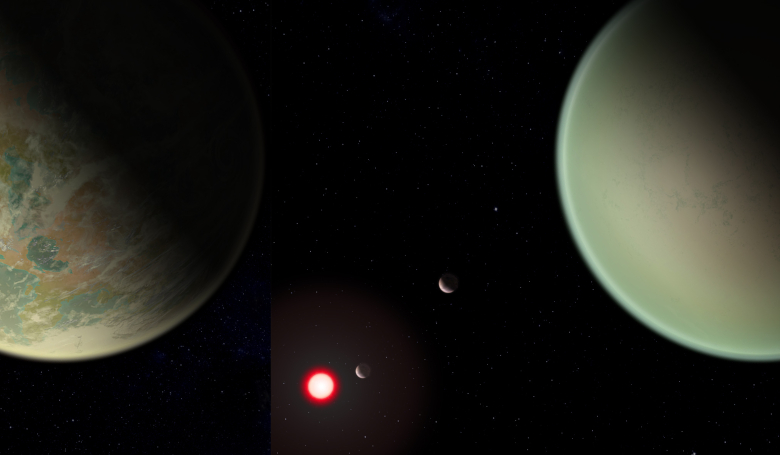The search for life on far-flung planets might just have got a little easier to spot thanks to a new technique that allows scientists to detect oxygen more clearly.
Oxygen is essential for life as we know it. On Earth organisms such as algae, plants and trees convert molecules such as carbon dioxide (CO2) into oxygen (O2) – molecular oxygen, O2, and atomic oxygen, O, are both referred to as oxygen – in a process called photosynthesis.
It stands to reason therefore that finding copious amounts of oxygen on another planet could be a sign that life of some sort is present.
But finding oxygen amongst the chemical signals radiating from an exoplanet can be tough. Oxygen is highly reactive, and it tends to stick to other atoms with ease, such as hydrogen (H) to make water (H2O) for example. Although water and life go hand-in-hand, H2O is not necessarily a sign that living organisms are flourishing in the same place. Finding the two signals together though could help narrow down the possibilities even more.
That might now be possible very soon as a team of scientists have found a new way to search for oxygen using the much anticipated successor to the Hubble telescope, NASA's James Webb Space Telescope (JWST) when it is launched next year.
JWST will be optimised to look for light in the infrared band of the electromagnetic spectrum. This will allow the telescope to look not only at the first stars and galaxies that formed after the Big Bang, but also into heavily clouded regions, that tend to block out other types of light such as visible light.
"Before our work, oxygen at similar levels as on Earth was thought to be undetectable with Webb," said Thomas Fauchez of NASA's Goddard Space Flight Center and lead author of the study recently submitted to Nature Astronomy. "This oxygen signal is known since the early 1980s from Earth's atmospheric studies but has never been studied for exoplanet research."
The signal Fauchez and colleagues are looking for is produced when molecules bump into one another and absorb the light produced by the collision. Different molecular species block out parts of the infrared light spectrum in different ways, so scientists can determine what chemicals are in a planet’s atmosphere.
"Oxygen is one of the most exciting molecules to detect because of its link with life,” said Edward Schwieterman at UC Riverside who also worked on the study.
However, it is unknown if life is the only cause of oxygen in an atmosphere, says Schwieterman. Some researchers think that oxygen might just be a sign of water evaporating from a planet’s surface, which is then broken down into atomic hydrogen and oxygen in the atmosphere when strong ultraviolet radiation hits the H2O molecule. If this is the case then O2 would not be a true indicator of abundant life on the planet.
"It is important to know whether and how much dead planets generate atmospheric oxygen, so that we can better recognise when a planet is alive or not," Schwieterman says. "This technique will allow us to find oxygen in planets both living and dead."
The signature of oxygen Fauchez and colleagues are looking for also overlaps a wide H2O band in the infrared that JWST can pick up too, however, the water signature in the spectra of a habitable planet is expected to be weak say the team in their paper. Though other telescopes, such as Hubble, can help detect water vapour in different bands of the electromagnetic spectrum to complement these studies.
The James Webb Space Telescope is scheduled to be launched on an Ariane 5 rocket from Arianespace's ELA-3 launch complex at European Spaceport located near Kourou, French Guiana in 2021.











